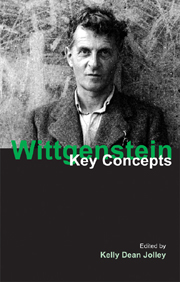Book contents
- Frontmatter
- Contents
- Contributors
- Abbreviations
- Introduction
- 1 Wittgenstein's philosophical remarks
- 2 Wittgenstein on meaning and meaning-blindness
- 3 Language-games and private language
- 4 Wittgenstein on family resemblance
- 5 Ordinary/everyday language
- 6 Wittgenstein on rule-following
- 7 Thinking and understanding
- 8 Psychologism and Philosophical Investigations
- 9 Moore's paradox revisited
- 10 Aspect perception
- 11 Knowing that the standard metre is one metre long
- 12 Therapy
- 13 Criteria
- 14 Grammatical investigations
- 15 Teaching and learning
- 16 Expression and avowal
- Chronology of Wittgenstein's life
- Bibliography
- Index
15 - Teaching and learning
- Frontmatter
- Contents
- Contributors
- Abbreviations
- Introduction
- 1 Wittgenstein's philosophical remarks
- 2 Wittgenstein on meaning and meaning-blindness
- 3 Language-games and private language
- 4 Wittgenstein on family resemblance
- 5 Ordinary/everyday language
- 6 Wittgenstein on rule-following
- 7 Thinking and understanding
- 8 Psychologism and Philosophical Investigations
- 9 Moore's paradox revisited
- 10 Aspect perception
- 11 Knowing that the standard metre is one metre long
- 12 Therapy
- 13 Criteria
- 14 Grammatical investigations
- 15 Teaching and learning
- 16 Expression and avowal
- Chronology of Wittgenstein's life
- Bibliography
- Index
Summary
Seen from a certain perspective, the expressions that we use in language can seem to be, as Wittgenstein put it, “dead” (see PI §454). After all, in one sense, the expressions themselves are mere marks on a piece of paper or on the blackboard, or sounds in the air. What gives those expressions “life”, that is, what is it that makes those expressions bearers of meanings? I think that it is against the background of this question that Wittgenstein's preoccupation with teaching and learning a language gets its significance, but I find that it is not an easy matter saying what that significance is. In Section 2 of Philosophical Investigations, Wittgenstein describes what he calls “a language more primitive than ours”:
The language is meant to serve for communication between builder A and an assistant B. A is building with building-stones: there are blocks, pillars, slabs and beams. B has to pass the stones, and that in the order in which A needs them. For this purpose they use a language consisting of the words “block”, “pillar”, “slab”, “beam”. A calls them out; – B brings the stone which he has learnt to bring at such-and-such a call. – Conceive this as a complete primitive language. […]
- Type
- Chapter
- Information
- WittgensteinKey Concepts, pp. 175 - 184Publisher: Acumen PublishingPrint publication year: 2010

